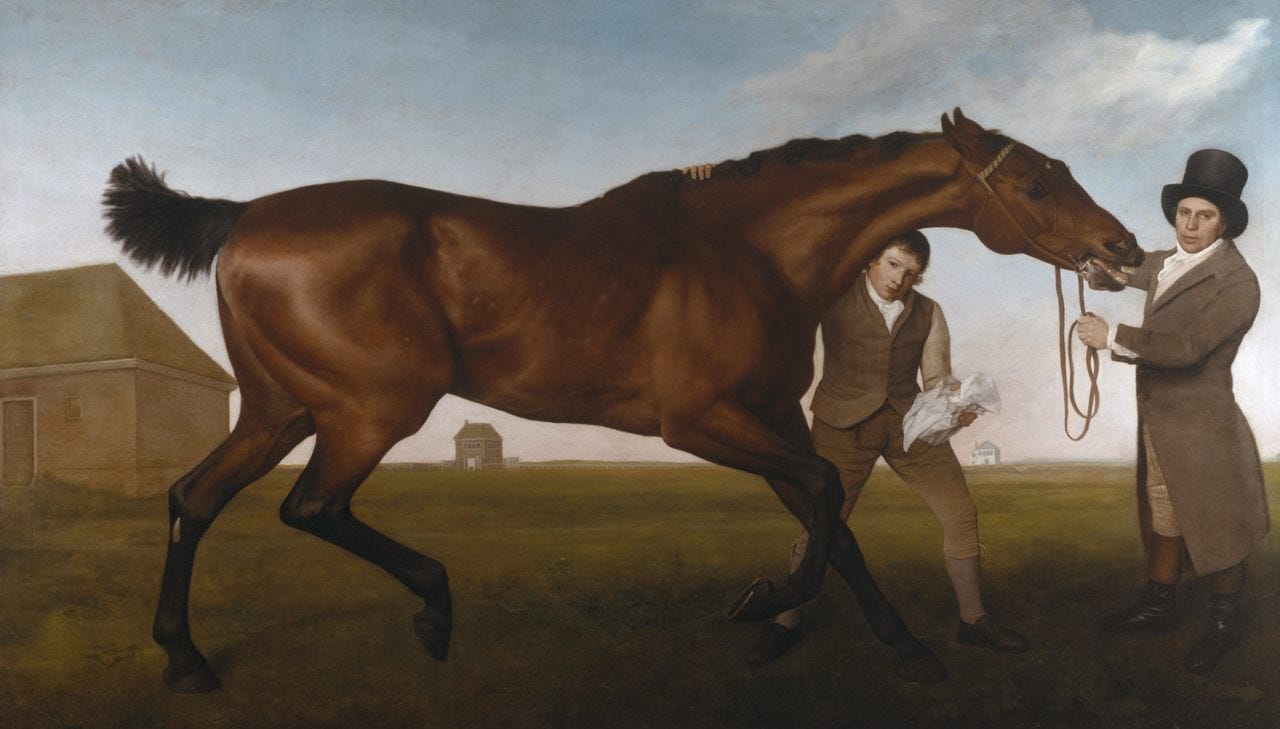Friday Bread Basket 9/9/22
God save the kouign

Table of Contents
Welcome to the Wordloaf Friday Bread Basket, a weekly roundup of links and items relating to bread, baking, and grain.
Horse Power

Gastro Obscura recently shared a post about horse bread, the fuel of choice for the English transport system until they turned to coal-powered locomotives:
Horse bread, typically a flat, brown bread baked alongside human bread, fueled England’s equine transport system from the Middle Ages up until the early 1800s. It was so logistically important that it was more highly regulated than its human counterpart, with commercial bakers adhering to laws dictating who could bake horse bread, as well as the bread’s price, size, and occasionally even its composition. The ubiquitous bread was made from a dough of bran, bean flour, or a combination of the two, and typically was flat, coarse, and brown.
Horse bread was also eaten by humans, but it was anything but the elite product that many of today’s bakery-produced whole-grain breads are:
But in pre-industrial England, horse bread carried the taste of shame. The dark bran bread sat at the bottom of a hierarchy that gave brown bread to farmers and servants and reserved white bread for the elite. Indeed, Englishpeople turned to horse bread during times of strife, and the abject poor likely ate it year round. And since horse bread was fed to laboring animals, humans who ate it were looked upon with disdain. In Ben Johnson’s 1598 comic play, Every Man Out Of His Humour, a wealthy character insults a group of peasants with the phrase, “You thread-bare, horse-bread-eating rascals.”

Netflix and Peel
Despite having worked on several food shows for years, I don’t actually watch a whole lot of food TV. But I’m definitely going to binge on the new season of Netflix’s Chef’s Table soon:
The show profiles some of the world’s pizza greats, including Pizzeria Bianco’s Chris Bianco, pizza al taglio madman Gabriele Bonci, Minneapolis’s Ann Kim, and Lovely’s Fifty Fifty's Sarah Minnick.
Phyllophila

Charlotte Druckman wrote a great primer for WSJ recently on why no one should ever fear working with phyllo dough, despite its reputation as a fussy, hard-to-handle ingredient. Along the way, she spoke to some phyllo pros, including my friend Robyn Eckhardt:
Ms. Brenner, an immigration lawyer in Los Angeles, told me of marathopita, a small, round, Cretan fennel pie filled with the vegetable’s fronds. Robyn Eckhardt, author of “Istanbul and Beyond,” recalled a pumpkin borek she watched a woman named Esen make in Erfelek, a small town in the Black Sea region of Turkey. The manti dish described by Selin Kiazim— the Turkish-Cypriot, London-based chef behind the restaurant Oklava and the cookbook of the same name—sounded similarly simple, and delicious: You fill the phyllo with (usually) mincemeat, roll it up and cut that roll into shorter cylinders. These “get stood-up in a buttered tray and baked until crispy,” she relayed via email. The little-known dish is served with a garlicky yogurt and tomato-chile butter. “Proper delicious stuff.”
The story includes three delicious-looking phyllo recipes, both savory and sweet, and a stack of tips for using the flaky pastry dough without difficulty.

That’s it for this week’s bread basket. I’ll see you all on Monday, when I’ll be unveiling a new, improved version of the Wordloaf Monday Morning Open Thread. I hope you all have a peaceful weekend.
—Andrew
wordloaf Newsletter
Join the newsletter to receive the latest updates in your inbox.




